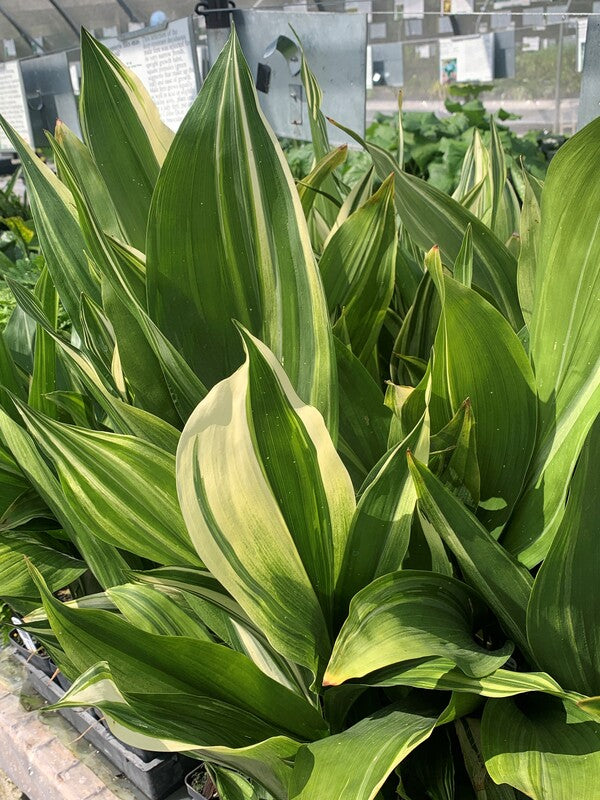Aspidistra elatior 'Mangetsu'
Mangetsu Cast Iron Plant
Item #: 15296
Zones: 7b to 10b
Dormancy: Evergreen
Height: 30" tall
Origin: China, Japan
Pot Size: 3.5" pot (24 fl. oz/0.7 L)
Aspidistra elatior 'Mangetsu' is a highly-prized, but rarely available, Japanese cast iron plant selection. The new leaves emerge ghostly white, with random vertical streaks of green. As the season ages, the foliage eventually turns to more of an Aspidistra 'Okame' pattern of green with white streaks. The cultivar name, Mangetsu translates to "full moon". This is an exceptional beauty, both in the ground and in a container, where winter temperatures are too cold.
Maintenance:
Aspidistra are very low maintenance perennials. Each leaf can last up to 3 years, but after the second year, it will begin to show signs of aging and leaf degradation. For that reason, we recommend removing all old foliage regularly to retain the attractiveness of the clump. It's always disappointing to see large patches of cast iron plants in public spaces where it hasn't been properly maintained.
Growing Conditions:
Cast iron plants grow well in both moist and dry soils as long as the drainage is good. Cast iron plants must be grown in shade, since their foliage will scorch if they are subjected to sun. In the jungles where they grow, they are often seen in very deep shade.
In containers, they make superb house plants. The common name cast iron plant speaks to their durability in less than ideal conditions. Regular moisture, including increased humidity when they are grown as house plants, keeps them from getting stressed and becoming susceptible to spider mites.
Garden Value:
The bold texture and upright form of cast iron plants is invaluable in the garden, since there few other plants with this form and texture. Many cast iron plants have amazing flowers, produced at the base of the foliage, often in the winter months. While these flowers are rarely noticed in the garden, they can be quite attractive in the home.


-
Other Attributes
Genus: Aspidistra
Flower Color: Spotted/Speckled
Leaf Color: Green , Variegated , White/Cream
Container Role: Thrillers
Garden Themes: Cottage Garden Plants , Living Wall , Night Gardens , White Garden
Other: Deer Resistant Plants , Drought Tolerant Plants , Dry Shade Plants , Groundcovers , Medicinal Plants , Plants from China , Rain Garden Plants , Salt Tolerant Seaside Plants , Tropical Looking Plants , Xeriscaping Plants , Colored Foliage , Patterned Foliage , House Plants



